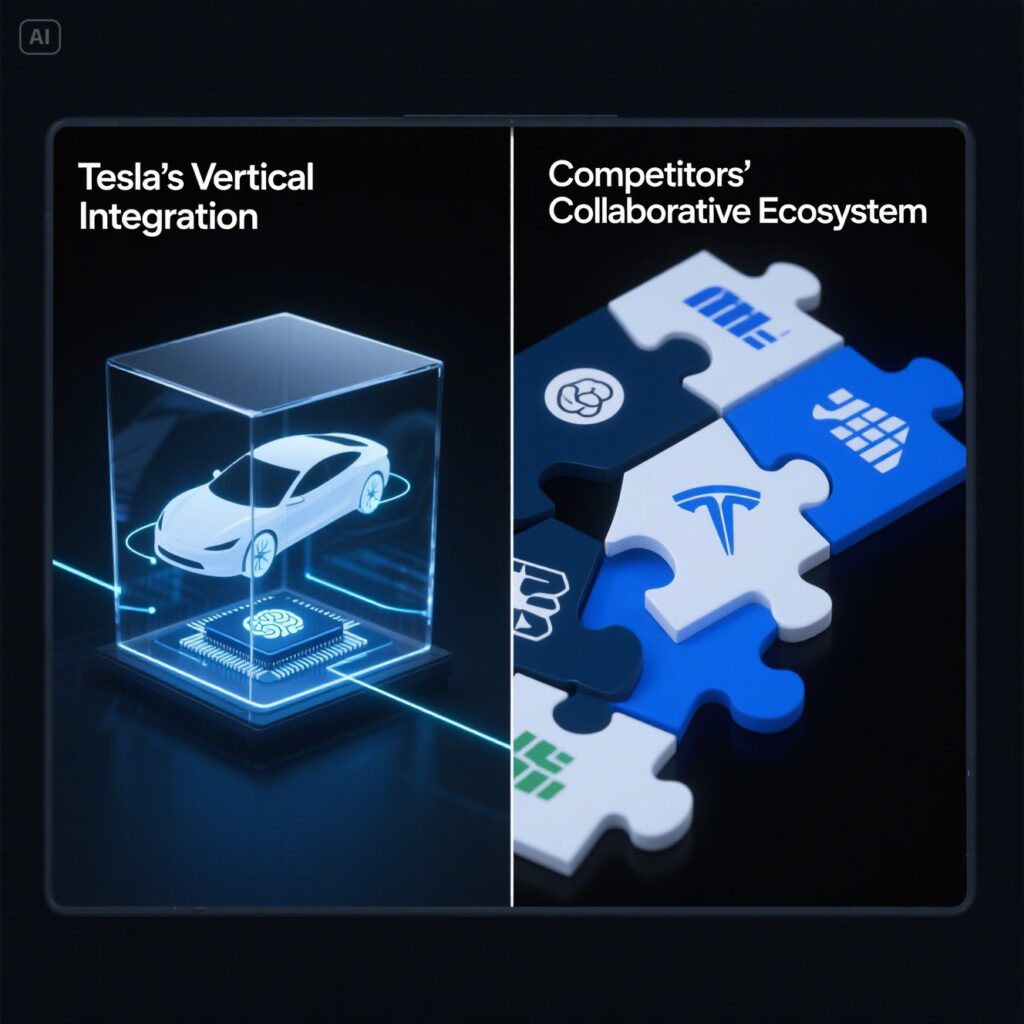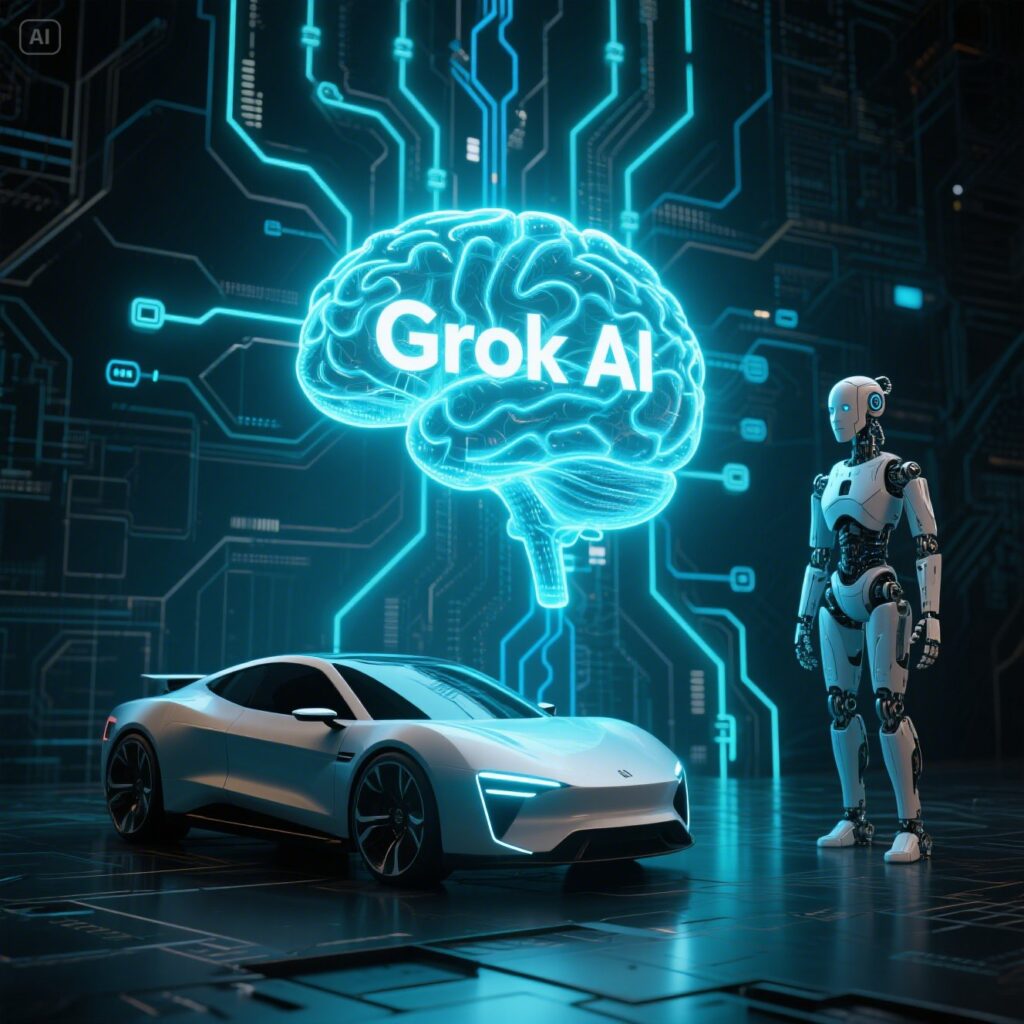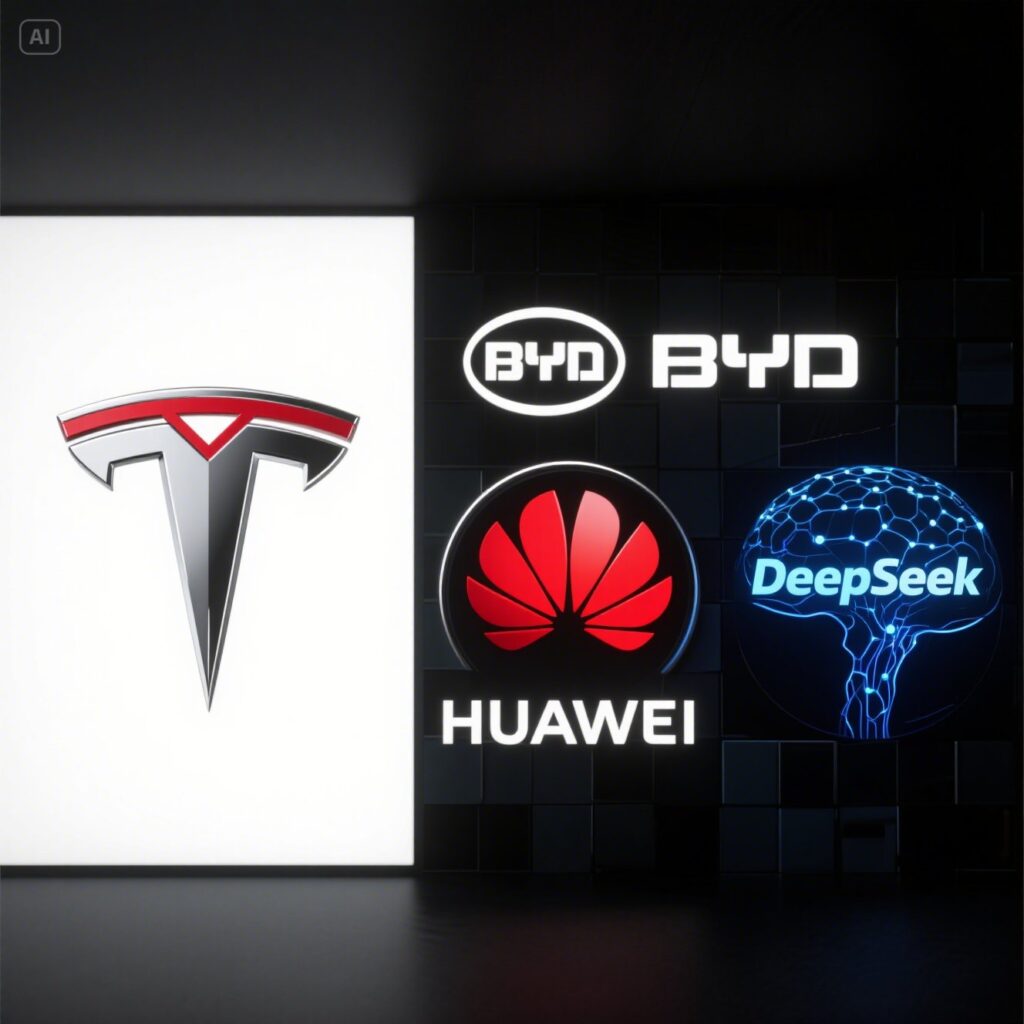Tesla’s Grok is Coming. But Isn’t Everyone Else Already Doing AI?
“So, Tesla is putting a chatbot in its cars. Big deal. Volkswagen has ChatGPT, and Chinese OEMs are already using advanced AI like DeepSeek. What’s the real story here?”
This is a perfectly reasonable question. On the surface, it seems Tesla is late to a party others have already started. However, looking closer, it appears Tesla isn’t just attending the same party; they might be building a whole new venue. The excitement isn’t about the feature itself, but about a fundamentally different philosophy that sets them apart in four key ways.

An In-House Brain vs. a Borrowed Mind?
The most significant difference seems to lie in vertical integration. Most automakers are licensing powerful LLMs from partners like OpenAI or DeepSeek and integrating them into their existing systems. It’s a pragmatic approach, much like PC makers using Windows and Intel chips.
Tesla, however, is using ‘Grok,’ an AI developed by its sister company, xAI. This mirrors Apple’s strategy: designing the hardware (the car), the core software (the vehicle OS), and the brain (Grok) all under one roof. This level of integration could allow for a degree of optimization and speed in updates that competitors may struggle to match.

A Smarter Chatbot or the Car’s Central Command?
While competitors focus on using AI to answer trivia or find restaurants, the market seems to believe Tesla has a grander vision. The speculation is that Grok won’t just be a conversationalist; it will be the car’s central nervous system.
One could imagine a scenario where a driver says, “Plan a road trip to Las Vegas, ensuring we never have to wait for a charger, and have the house AC turn on 30 minutes before we get back.” Fulfilling this requires the AI to control navigation, battery management, FSD, and even smart home APIs. It’s a shift from a car with AI features to a car that is an AI platform.

The Real Endgame: Is This Even About Cars Anymore?
Perhaps the most compelling argument for why Tesla’s approach is different has little to do with cars alone. Elon Musk has confirmed that Grok will also be the brain for the ‘Optimus’ humanoid robot.
This suggests a unified AI ecosystem. The visual data and driving experience from millions of cars could train the robot’s spatial awareness. Conversely, the robot’s understanding of physical interaction could refine the car’s self-driving algorithms. It’s a flywheel of data and learning across different hardware platforms—a strategy no other traditional automaker is positioned to execute.
The Final Showdown: Apple vs. Android, on Wheels

So, what does this all mean for the future? We appear to be witnessing the start of a major philosophical battle for the soul of the intelligent vehicle.
- The Tesla ‘Apple’ Model: A closed, vertically integrated ecosystem. Every component, from the chip to the AI, is custom-built and controlled. This could lead to peak performance and a seamless user experience.
- The Competitor ‘Android’ Model: A collaborative, open ecosystem. Automakers partner with various best-in-class tech companies (NVIDIA, CATL, DeepSeek, etc.). This offers flexibility and choice but risks fragmentation.
While regulatory hurdles in specific markets like China might complicate this, the real war will likely be fought on the global stage. When Chinese OEMs expand internationally, these two models will collide head-on.
➡️ [Full Comparison] Tesla’s ‘Apple’ vs. China’s ‘Android’ Model: A Strategic Breakdown
The excitement around Grok, therefore, isn’t just about a new tech feature. It seems to be about the realization that Tesla isn’t just in a race to build a better car; it’s in a race to define the very operating system for the future of mobility. We may be watching the opening moves of the next great tech proxy war.
My AI Jazz Project:
2 Comments